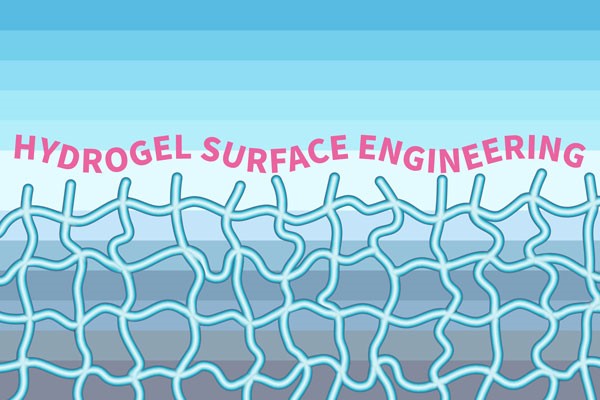YOSHIDA-AKIMOTO Lab.

Department of Materials Engineering
School of Engineering,
The University of Tokyo
Japanese/English
Gels have been recognized mainly as "bulk materials so far. Therefore, there have been many "macroscopic and average" discussions on physical properties of gels. On the other hand, when cells/biological tissues are cultured using gels, a contact point between a cell/ biological tissue and a gel material is "microscopic and localized" interface composed of polymer network and water. We believe that in order to discuss interaction between a gel and a cell/biological tissue from a "microscopic and localized" perspective, it is necessary to understand and arbitrarily design microscopic structures and physical properties of the surface/interface of gels. Our research group is developing and accumulating unique techniques and knowledge for "microscopic and localized" discussion of gels and integrate related information to conduct novel research that is not available elsewhere.
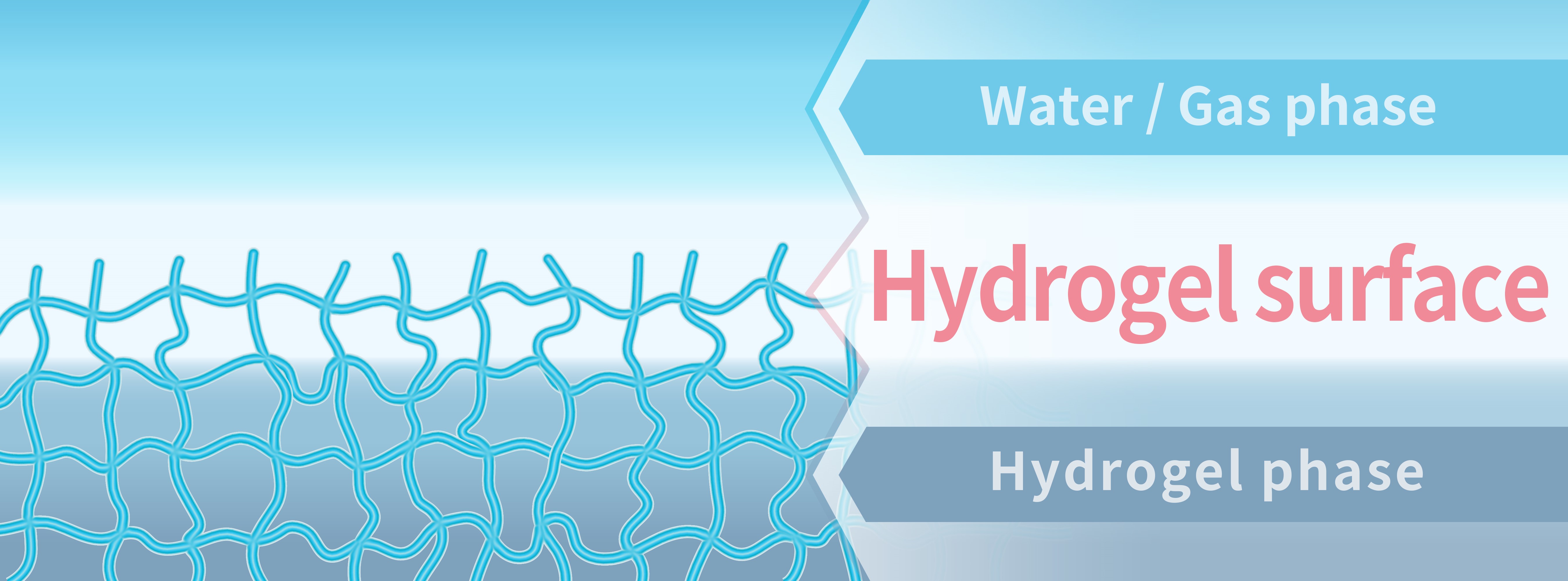
Specifically, we conduct nanoscale structural evaluation and quantitative property evaluation, and analyze the property-structure relationship. Currently, there are almost no general methods to quantitatively evaluate structures and properties of gel surfaces. However, we do not want to give up on the idea that "we cannot measure them because suitable evaluation devices are not available". We would like to challenge ourselves to understand the gel surface by applying devices that were not originally designed for gel measurement to gel measurement, and sometimes by developing our own devices.
We have established a designing method using surface-initiated living radical polymerization for gel surface structures in which polymer chains can be introduced into the gel surface region at an arbitrary density and chain length. We call the gel prepared by this method as the “Surface-grafted gel”. By using this method, we have achieved the formation of wrinkle structure on gel surfaces, control of elastic moduli and hydrophobization of gel surfaces, etc. It was also found that the method not only controls surface structures and properties, but also controls bulk properties such as diffusivity and swelling. Many of these results included phenomena that defied our expectations. They are interesting results that we were able to encounter novel phenomena produced by the gels by “designing" their surface. We continue to design novel gel functions in a bottom-up manner by carefully observing and evaluating novel phenomena induced by novel structures.
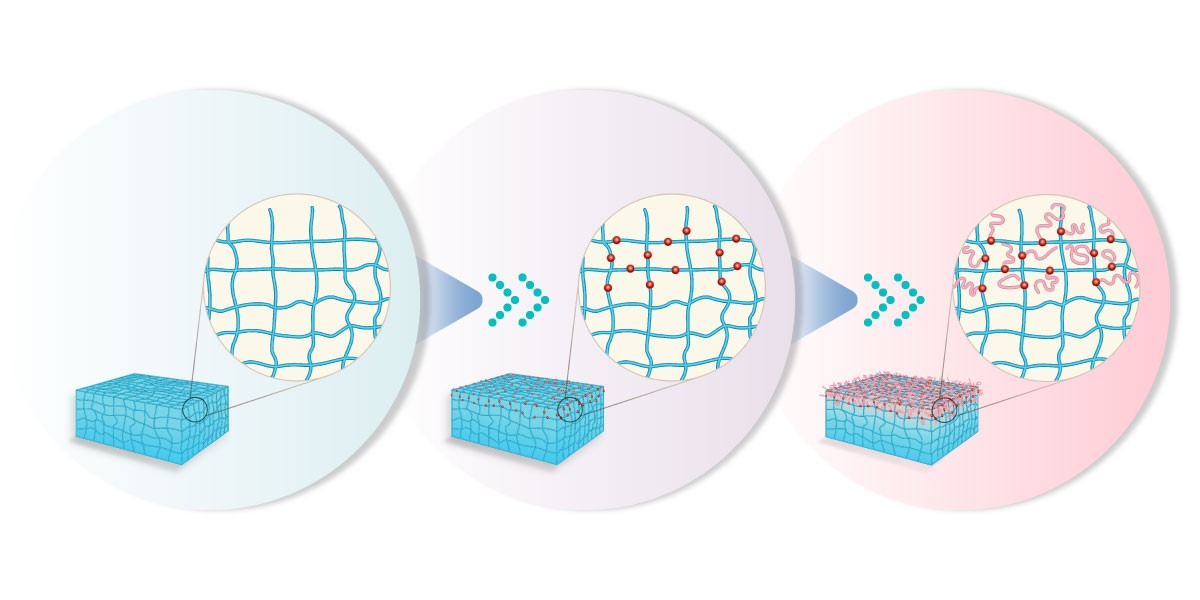
Biology emerged by Materials Engineering:
We started our research on gel surfaces because we would like to create cell/biological tissue culture gel materials (i.e., materials that contribute to the elucidation of mechanisms related to biological development and the formation of the mind) that are truly needed in the fields of developmental biology and neuroscience. Therefore, the primary goal is to develop cell/biological tissue culture materials. In this case, it would be ideal if we could build a "new Biology emerged by Materials Engineering " by discussing biology together, rather than just handing over the materials we have prepared to biological researchers. On the other hand, the knowledge and technology related to gel surfaces can, of course, contribute greatly to the medical field, and we believe that it can be widely applied to fields other than biotechnology. We would like to think about the development of applications in a flexible manner, without deciding to "aim for only this".
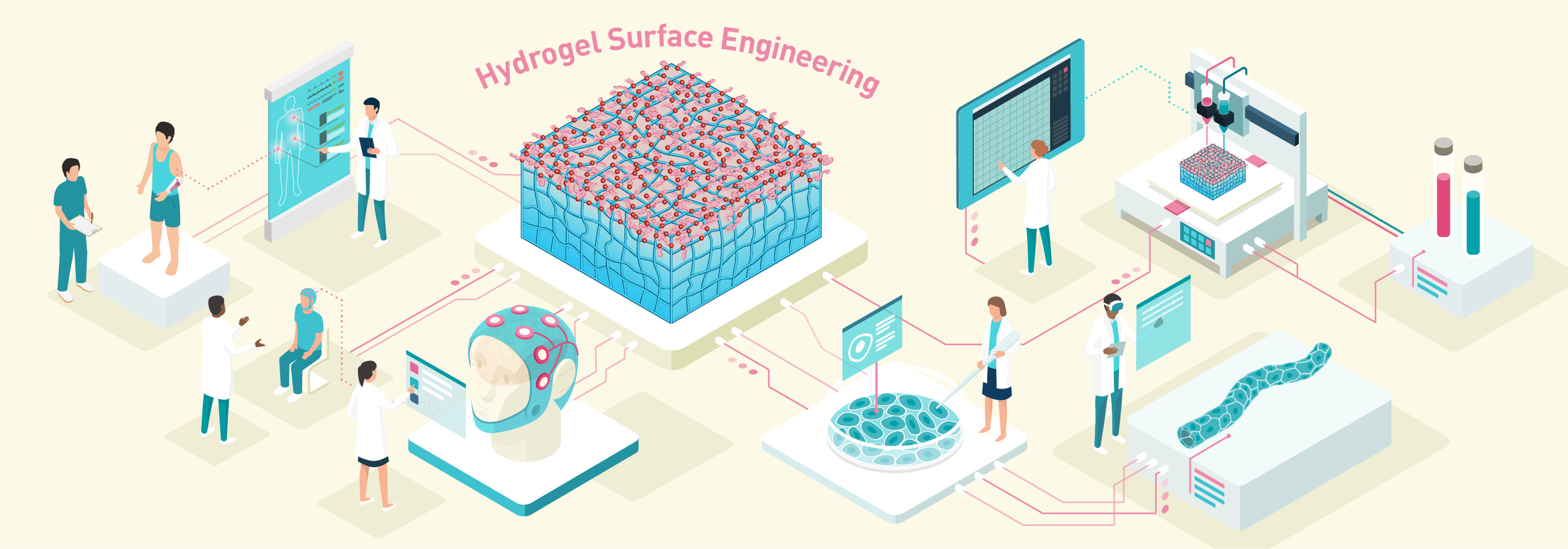
Pioneering a novel research area:
The surface of gels is a research area that has not received much attention due to the lack of evaluation methods. On the other hand, it can be said that cells are water holding structures like gels, so accumulating knowledge and techniques on gel surfaces will be useful for clarifying the structure and function of cell surfaces and the phenomena they generate. With this in mind, Dr. A. M. Akimoto launched the Society for Fluctuating Interface in 2020 with Dr. Nobuyuki Tanaka, a senior researcher at RIKEN, Japan, who conducts research on cell surfaces to discuss the surface and interface of hydrous materials. Through this society, we would like to develop a novel research area related to surfaces of hydrous materials, not only the gel material
Super interdisciplinary fusion:
Our main technology is "polymer synthesis”. I set the "molecular design of gel surfaces” as the central part of our research and conduct research through wide-ranging interdisciplinary fusion. We conduct joint research with researchers specializing in polymer physics for structural evaluation of gel surfaces and in precision mechanical engineering and bioengineering for development of new physical property evaluation devices. We also have ongoing discussions and budding collaborations with researchers from many different fields (electronic properties, developmental biology, neuroscience, etc.). Basically, all of our research is done in collaboration with other fields. We are looking for highly motivated members who are willing to work with a light footwork and enjoy conducting experiments at collaborating laboratories in Japan and abroad, transcending research fields and hierarchies. To start something new in the interfacial area between different fields and to dismantle common sense. I believe that this is the shortcut to creating innovation.
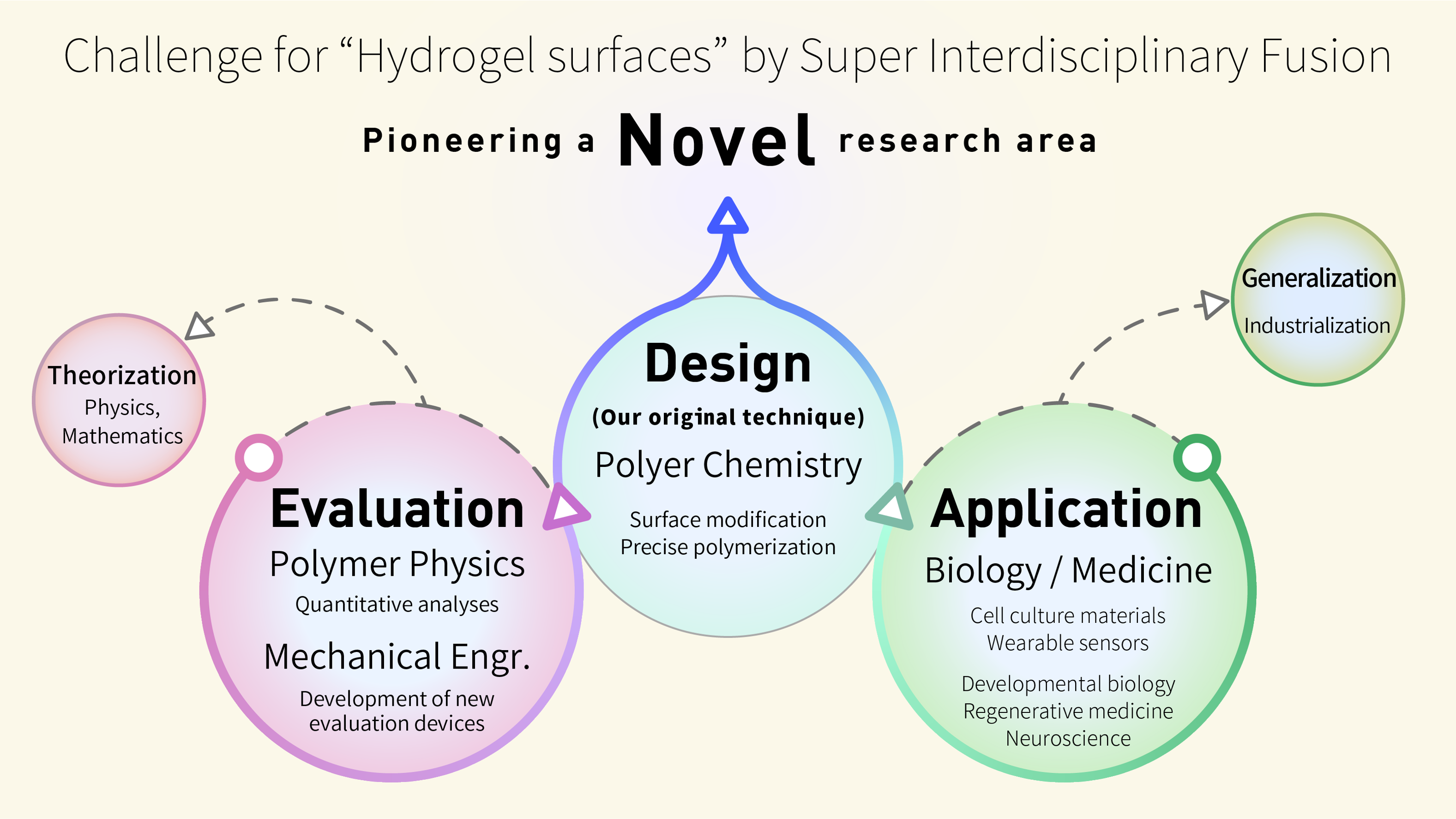
Research approach:
Rather than designing new materials with predictable functions by combining already known functions, we find it fascinating to create new materials by encountering unexpected phenomena. In this sense, we emphasize a bottom-up approach. On the other hand, when we make a research theme after considering the development of a specific application, there is a definite starting point of “We want this kind of function," and we proceed with research in a top-down manner. This style of research is interesting in the sense that there are many new discoveries to be made as we come up with various ideas and solve problems one by one. Ideally, research should be conducted while maintaining a good balance between bottom-up and top-down approaches.
Dr. Akimoto's own goal:
My own ultimate goal of the research is to contribute to "understanding of what human beings are". Many people may feel uncomfortable that I am talking about "what are human beings?" despite we are conducting research on materials. However, as we described in the top page of the website, "cells are gels," and gel materials have many characteristics similar to living organisms. I would like to get closer to "what are living organisms?", and ultimately, "what are human beings?", by promoting biological research using gels for cells/living tissues culture, and by applying the results of the analysis of the physical properties of gels with clear structures to the discussions of physical properties of cells. "What are human beings?" is an issue that integrates the humanities and sciences. There are researchers who are tackling this issue from various perspectives such as philosophy, psychology, brain science, and robotics. I would be happy if I could add a "materials engineering point of view" to them and make even a small contribution. I believe that evolving the concept of "what are human beings?" will lead to the foundation of the future prospects of all human society including social rules, medical treatment, technological development, education, and human communication for a better and happier life of a human.
Educational goal:
The above is Akimoto's own goal, but I believe that each of students and other people who are/will be working with me have different goals in their research. Through the research activities here, I hope that you will acquire the ability to discuss across various fields, and the ability to construct a single logic after looking over your own research and clarifying your position. I would like to develop human resources in science who can take leadership not only in technology but also from overall perspective.
